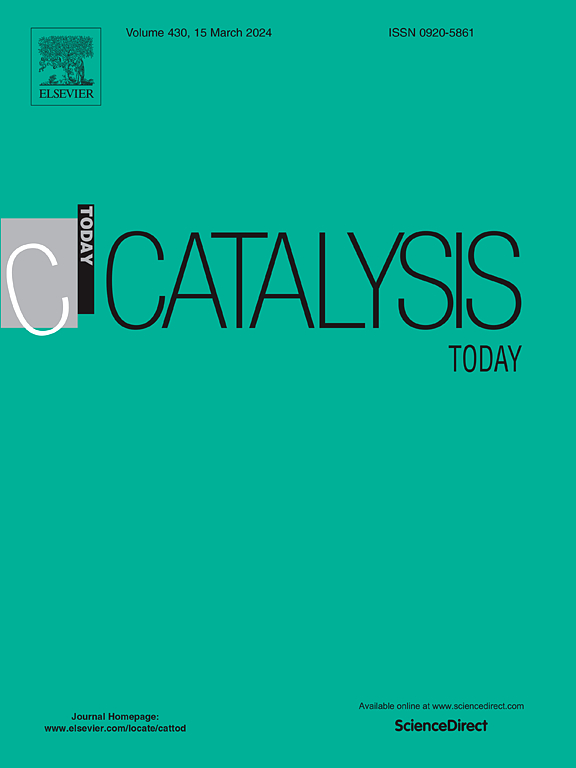Self-assembled porphyrin on coral-like ZnO nanoplates: A novel hybrid for enhanced photocatalytic degradation of organic pollutants under simulated sunlight
IF 5.2
2区 化学
Q1 CHEMISTRY, APPLIED
引用次数: 0
Abstract
This study uses a straightforward, surfactant-free, non-covalent self-assembly method to present the controlled synthesis of tetrakis(4-carboxyphenyl) porphyrin (TCPP) nanofibers on ZnO nanoplates. The resulting ZnO/TCPP nanocomposites were meticulously characterized using SEM, XRD, EDS, UV–vis, FTIR, and BET spectroscopy, revealing a coral-like ZnO nanosheet structure embedded within a TCPP nanofiber matrix. These nanocomposites exhibit enhanced photocatalytic degradation of Rhodamine B in aqueous solutions, significantly outperforming individual ZnO nanoplates and TCPP nanofibers. The composite material benefits from synergistic photocatalytic activity, with reduced bandgap energies of 2.20 eV for TCPP and 2.68 eV for ZnO. Under simulated sunlight, the ZnO/TCPP catalyst achieved an impressive 99.02 % Rhodamine B removal within 90 minutes. Additionally, a detailed mechanism for the photocatalytic degradation process was proposed, highlighting the potential of this novel hybrid material for environmental remediation applications.
求助全文
约1分钟内获得全文
求助全文
来源期刊

Catalysis Today
化学-工程:化工
CiteScore
11.50
自引率
3.80%
发文量
573
审稿时长
2.9 months
期刊介绍:
Catalysis Today focuses on the rapid publication of original invited papers devoted to currently important topics in catalysis and related subjects. The journal only publishes special issues (Proposing a Catalysis Today Special Issue), each of which is supervised by Guest Editors who recruit individual papers and oversee the peer review process. Catalysis Today offers researchers in the field of catalysis in-depth overviews of topical issues.
Both fundamental and applied aspects of catalysis are covered. Subjects such as catalysis of immobilized organometallic and biocatalytic systems are welcome. Subjects related to catalysis such as experimental techniques, adsorption, process technology, synthesis, in situ characterization, computational, theoretical modeling, imaging and others are included if there is a clear relationship to catalysis.
 求助内容:
求助内容: 应助结果提醒方式:
应助结果提醒方式:


